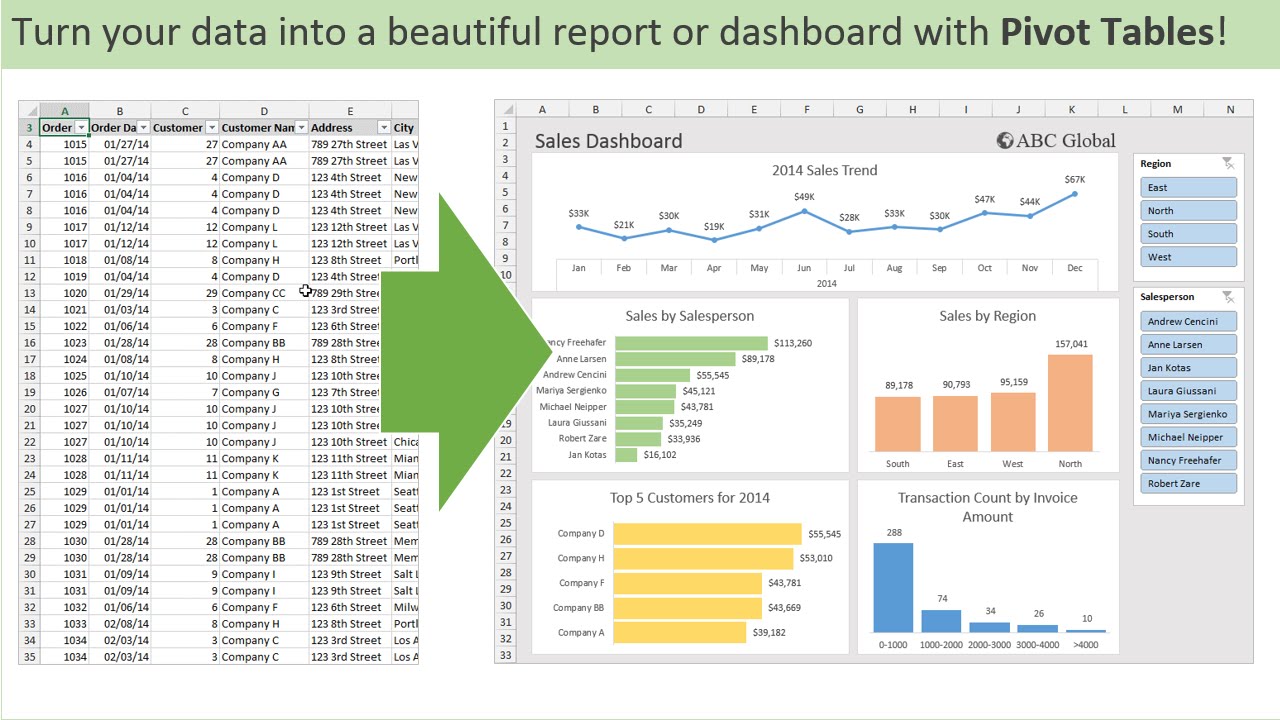

The loop cycles through every sheet within the current workbook, looking for one with the specific name ( Pivot). You can use any variable name (sht1) to hold the sheet name. The for each loop cycles through each sheet within the workbook and stores the sheet name within the sht1 variable. In this guide, let's create a new pivot sheet to store the pivot table. Alternatively, you can use an existing worksheet to hold the pivot. Firstly, delete the existing pivot sheet and use VBA to create a new sheet to store the pivot. To create a new pivot table, you have two options. Towards the end of the code, you can turn them on again by setting the value as True. You can turn off DisplayAlerts and ScreenUpdating parameters by setting their values to False.
#Creating pivot table excel code#
When this code runs, it suppresses any alerts, warnings, and messages Excel would show otherwise.
#Creating pivot table excel update#
ScreenUpdating: This property defines whether to update changes in real time or only once the code has finished running.


You can use the Dim statement to declare variables, as follows: Dim PSheet As Worksheet, DSheet As Worksheet Within the module, start by declaring variables to store some user-defined values you'll use in the script. The module name ends with End Sub, which is the ending command of a module: End Sub 2. Since this is a demo, you can define the module name as follows: sub pivot_demo() It's a good practice to use a module name that resonates with the purpose of the code.


 0 kommentar(er)
0 kommentar(er)
